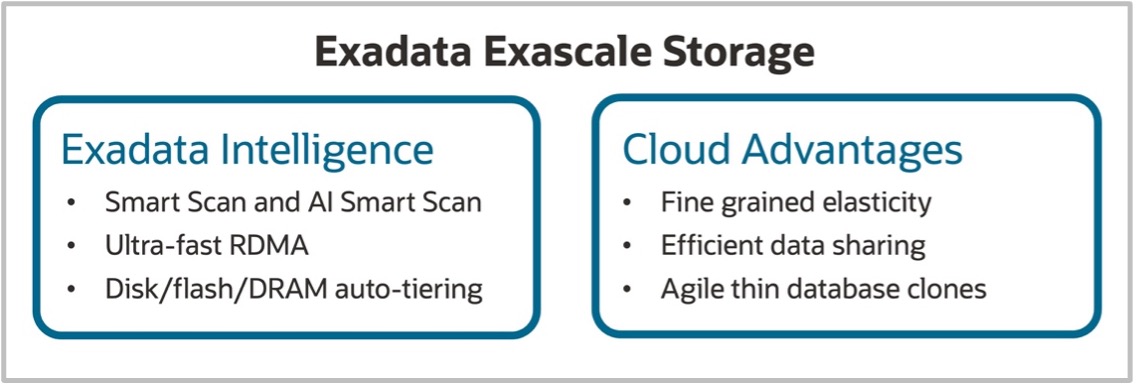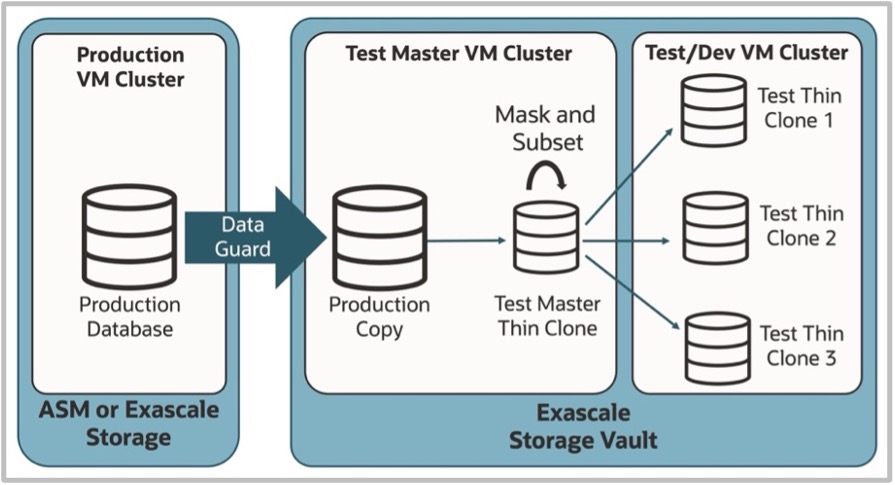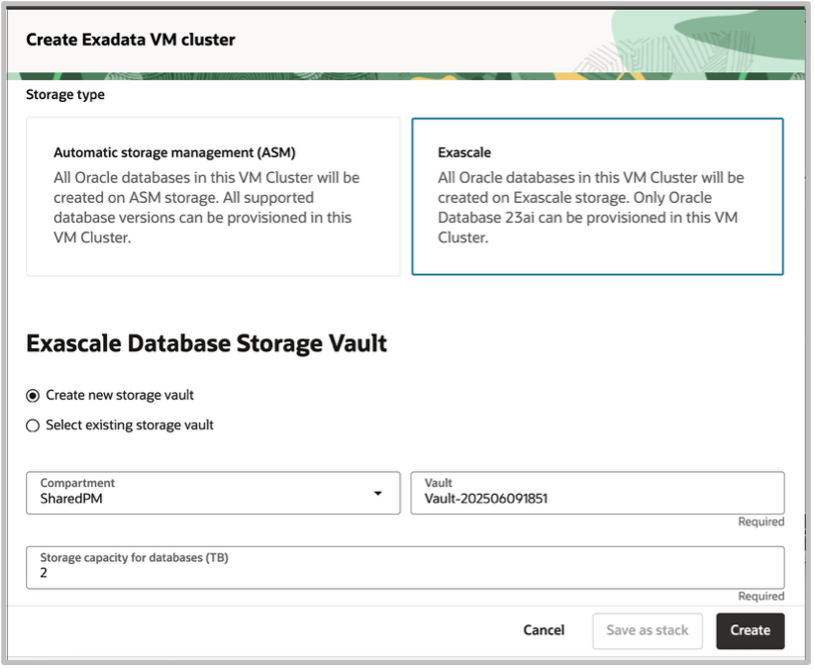Exadata Exascale – a unique, intelligent data architecture for the cloud – re-imagines how resources are managed on Exadata, while continuing to deliver industry-leading performance, availability, and security that organizations expect for their most demanding mission-critical Oracle databases. A key component of the Exascale architecture is pools of Exascale storage that provide fine grained storage scaling, efficient data sharing across clusters, and agile thin database clones for test and development, while retaining all the unique Exadata intelligence and features.

With this announcement, Exascale software can now be deployed with Exadata Database Service on Cloud@Customer and Exadata Database Service on Dedicated Infrastructure in the public cloud. Exascale software moves storage management to the storage servers, in contrast to Automatic Storage Management (ASM) running in the compute servers. Both Exascale storage and ASM can be deployed on the same infrastructure so existing databases can continue to run on ASM while databases running on Exascale storage can benefit from simplified storage management and innovations such as reimagined database clones. Both ASM and Exascale storage support Oracle Database 26ai new features such as AI Vector Search and JSON relational duality. Exascale storage can be provisioned without impacting workloads already in production.

Exascale storage enhances test and development as well as data sharing capabilities of Exadata, making it an ideal platform for all lifecycle phases of your enterprise applications. Efficient and rapid thin database clones leverage Exascale redirect-on-write technology, drastically reducing storage requirements while enabling rapid provisioning of new development environments. With Exascale, thin database clones supporting all Exadata features and optimizations can be provisioned for each developer, eliminating the need to coordinate database access and ensuring identical behavior between development and production.
Exascale supports thin database clones across different VM Clusters to isolate production from development environments where it may be required to mask the data. The recently announced Exadata Database Service for Developers enables idle Exadata resources to be used for development at zero additional cost. When combined with Exascale enhancements these capabilities accelerate the development of next-generation applications while making Exadata more cost-effective.

Deploying Exascale storage is simple. You allocate Exascale storage capacity from available storage on your Exadata infrastructure. From your Exascale storage, you create one or more Exascale storage vaults. An Exascale storage vault is a logical container that uses the physical resources provided by the Exascale storage. When you create a VM Cluster that will use Exascale storage, you specify the desired Exascale storage vault. You create and migrate databases just as you normally would and multiple VM Clusters can share the same vault. You can thin clone a pluggable database within a VM Cluster and even across VM Clusters when the VM Clusters share an Exascale storage vault.

Exascale storage vault capacity dynamically scales instantly without the performance impact of an ASM rebalance. If your currently allocated Exascale storage capacity isn’t sufficient to scale the Exascale storage vault, you’ll need to allocate additional Exadata storage. In cases when Exadata storage is not available, you can either reduce the storage allocated to existing VM Clusters or expand the number of storage servers in your Exadata infrastructure. It’s important to note that while there’s no rebalance associated with scaling an Exascale storage vault, scaling the Exascale storage on the infrastructure does trigger a rebalance operation. Oracle recommends provisioning ample Exascale storage upfront to minimize frequent scaling events.
The initial release of Exascale storage with Exadata Database Service on Cloud@Customer and Exadata Database Service on Dedicated Infrastructure provides the ability to provision Exascale storage for databases. In the future, Exascale storage will also be available for Virtual Machine images and backups, enabling more VMs and more capacity for guest VM file systems.
For more information, refer to these important links to help you get started.

